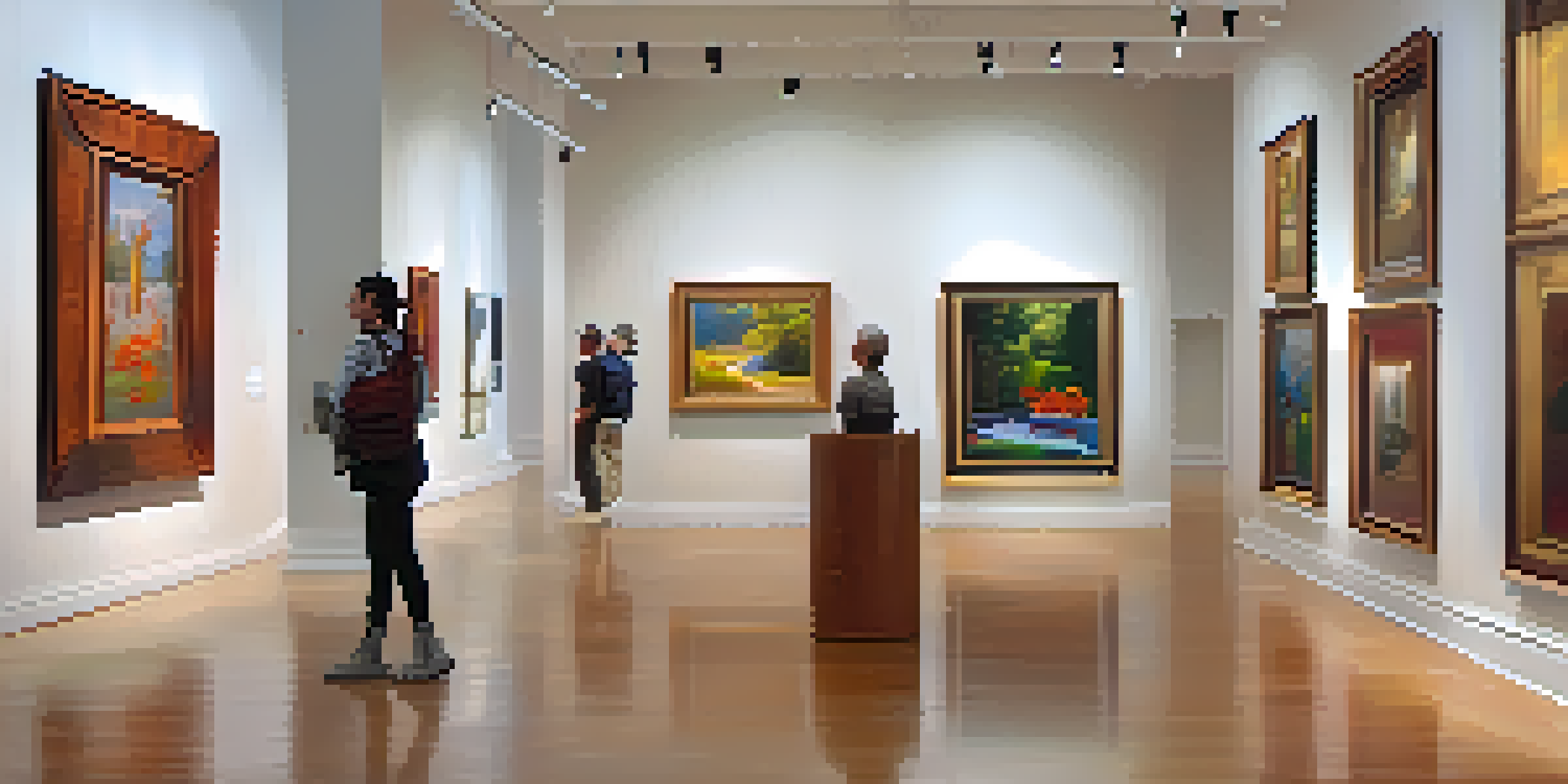Understanding Art Valuation: Factors That Influence Prices

The Basics of Art Valuation: What You Need to Know
Art valuation is the process of determining the monetary value of an artwork. This can be crucial for insurance, resale, or estate planning. Understanding how valuation works can empower collectors and investors alike.
Art is not freedom from discipline, but disciplined freedom.
At its core, art valuation combines both objective and subjective elements. Factors include the artist's reputation, artwork condition, and market demand. Each of these components plays a vital role in shaping the final price tag.
Related Resource
Ultimately, art valuation is not just about numbers; it's also about the story behind each piece. A deeper appreciation of an artwork's history can significantly influence its perceived value among collectors.
Artist Reputation: The Star Factor in Art Prices
One of the most significant factors affecting art prices is the reputation of the artist. Well-established artists often command higher prices due to their recognized contributions to the art world. Think of it like the difference between a bestselling author and a debut novelist.

An artist's prior sales history also plays a crucial role. If an artist has consistently sold works at high prices, their future pieces are likely to follow suit. This creates a sense of reliability and desirability for investors.
Artist Reputation Drives Prices
The reputation and sales history of an artist significantly influence the monetary value of their artworks.
Moreover, the artist's status can evolve over time. Emerging artists with strong potential can see their prices soar as they gain recognition, making early investments a gamble worth considering.
Market Demand: The Influence of Trends and Tastes
Market demand is a dynamic force that can significantly impact art valuation. Trends in contemporary art can cause certain styles or mediums to surge in popularity, thus increasing prices. For instance, street art has gained considerable traction in recent years, leading to inflated values for works by popular street artists.
The more I paint, the more I realize that I can never paint enough.
Seasonal auctions and exhibitions also play a role in shaping demand. Events like Art Basel or major auction houses' sales can create a buzz that influences potential buyers, ultimately driving prices higher.
Related Resource
Understanding current trends and market shifts is essential for collectors. Keeping an eye on emerging movements can help you make informed decisions about when to buy or sell.
Artwork Condition: Why It Matters for Valuation
The physical condition of an artwork is a critical factor in its valuation. Pieces that are well-preserved and free from damage are often valued much higher than those showing signs of wear and tear. Imagine buying a vintage car; its condition greatly affects its worth.
Restoration and conservation efforts can also impact value. While professional restoration can enhance an artwork's appeal, it may also lead to debates about authenticity. Collectors typically prefer original works in their untouched state.
Market Demand Affects Valuation
Trends and events in the art world can lead to fluctuations in market demand, impacting art prices.
Thus, maintaining an artwork's condition and understanding the implications of restoration are vital for anyone serious about art investment.
Provenance: The Story Behind the Art
Provenance refers to the history of ownership of a piece of art, and it can significantly enhance its value. A documented history that traces back to notable collectors or exhibitions adds prestige to an artwork. It's akin to having a celebrity endorsement.
When artworks have a rich provenance, they often attract higher bids at auctions. Collectors are more willing to invest in pieces with a compelling story, viewing them as not just art, but investments with a narrative.
Related Resource
Therefore, maintaining proper documentation and records of ownership is essential for both buyers and sellers in the art market.
Rarity: The Scarcity Principle in Action
Rarity is a fundamental principle that influences art pricing. Limited editions or unique pieces often attract higher values because of their scarcity. Think of it like a limited-release sneaker; the fewer there are, the more people want them.
Additionally, the artist's output can affect rarity. If an artist produces only a handful of works, each piece's value can skyrocket due to its exclusivity. Collectors often seek out these rare gems to complete their collections.
Provenance Adds Value to Art
A documented history of ownership enhances an artwork's prestige and can lead to higher auction bids.
Thus, understanding the rarity of a piece can provide valuable insights into its potential appreciation in value over time.
Cultural Significance: The Impact of Context
Art that holds cultural or historical significance can command higher prices. For example, pieces that reflect critical social movements or pivotal historical moments resonate deeply with buyers, often leading to increased value. They become not just artworks but symbols of change.
The context in which an artwork was created also plays a role. Artists who address contemporary issues or resonate with current societal themes may find their work valued higher as they connect with modern audiences.

Thus, understanding an artwork's cultural significance can help collectors appreciate its worth beyond the monetary value.
Conclusion: Navigating the Art Valuation Landscape
Navigating the art valuation landscape can be complex, but understanding the key factors can empower collectors and investors. From the artist's reputation to cultural significance, each element weaves a narrative that influences pricing.
By staying informed about current trends, market demands, and the stories behind artworks, you can make more educated decisions. This not only enhances your collection but also enriches your appreciation of art.
Ultimately, art valuation is about more than just numbers; it's about understanding the deeper connections that make each piece unique.